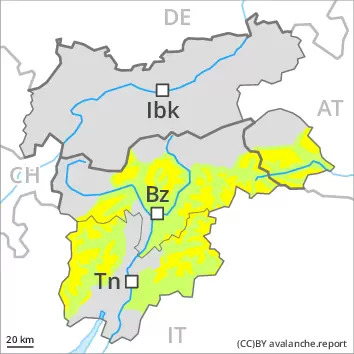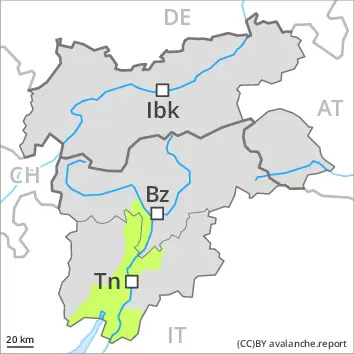
Danger level
 | 2200m |
|  |
|  | ||||
|  |
|  |

Wind slabs and weakly bonded old snow require caution.
Avalanches can be released in the weakly bonded old snow in isolated cases. Caution is to be exercised at transitions from a shallow to a deep snowpack. Mostly avalanches are rather small.
The rather small wind slabs of the last few days are in some cases prone to triggering at elevated altitudes. They are to be avoided especially in very steep terrain.
The danger of wet and gliding avalanches will increase a little during the day.
Snowpack
dp.7: snow-poor zones in snow-rich surrounding
dp.6: cold, loose snow and wind
Towards its base, the snowpack consists of faceted crystals, especially on shady slopes.
In some cases the various wind slabs have bonded still only poorly with the old snowpack. As a consequence of mild temperatures and solar radiation the snow drift accumulations stabilised. Sunshine and high temperatures will give rise as the day progresses to slight moistening of the snowpack. Only a small amount of snow is lying for the time of year.
Tendency
The avalanche danger will persist.



